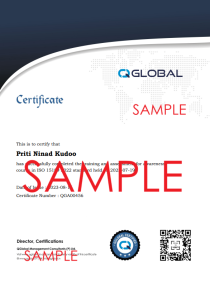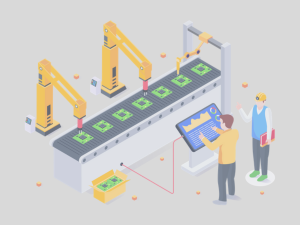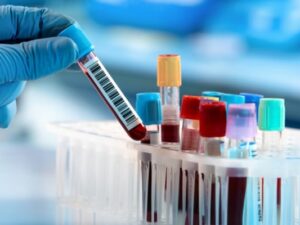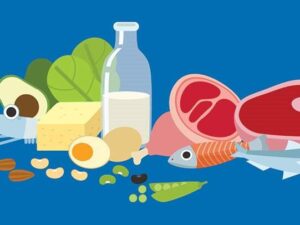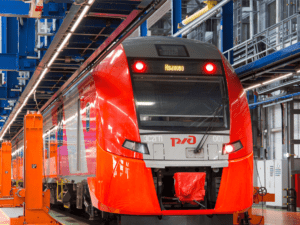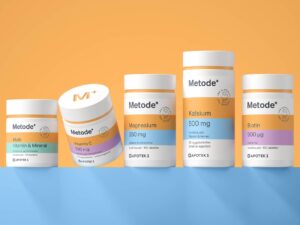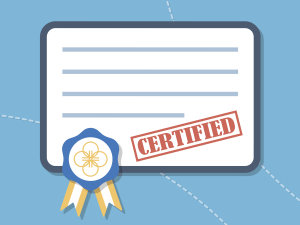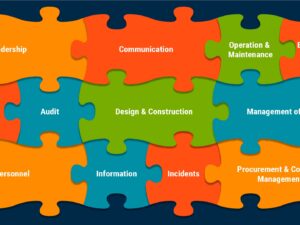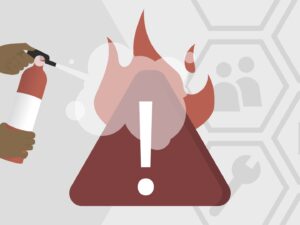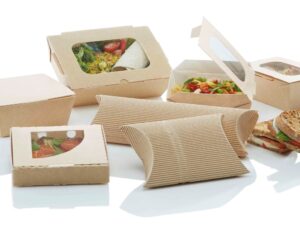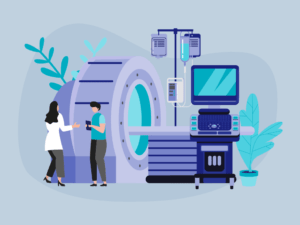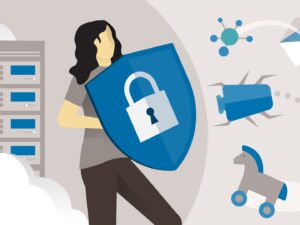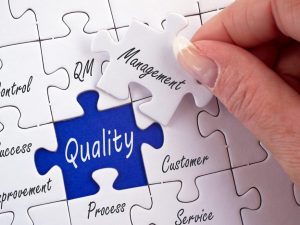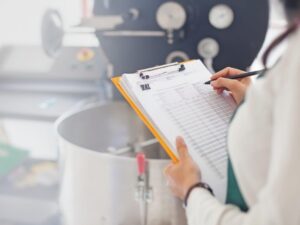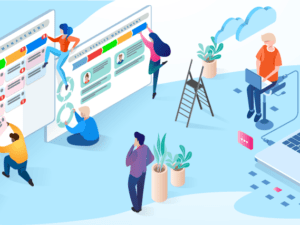ISO 9001 2015 & ISO 22000 2018 Integrated Management System (IMS) – Lead Auditor Course
- Description
- Curriculum

The ISO 9001 standards provide guidance and tools for organizations who want to make sure that their products and services consistently meet customer’s requirements, and that quality is consistently improved. ISO 9001 standards sets out the criteria for a quality management system and is the only standard in the family that can be certified to (although this is not a requirement). It can be used by any organization, large or small, regardless of its field of activity. Keeping food safe from farm to fork by ensuring hygienic practices and traceability at every step of the supply chain are essential tasks for the food industry. ISO 22000, Food safety management systems – Requirements for any organization in the food chain, sets out the requirements for a food safety management system. It defines what an organization must do to demonstrate its ability to control food safety hazards and ensure that food is safe for consumption. ISO 22000 is applicable to all organizations in the food and feed industries, regardless of size or sector. It is designed in a way that it can be integrated into an organization’s existing management processes but can also be used alone. ISO 22000 is based on the Codex principles for food hygiene and this enables authorities to refer to ISO 22000 in national requirements and government inspections to ensure that all the criteria for food safety are met. This lead auditor training course on an integrated management system based in ISO 9001 2015 and ISO 22000 2018 standards will help you learn how to initiate an audit, prepare and conduct audit activities, compile and distribute audit reports and complete follow-up activities. On successful completion of this course, you will be able to optimize your auditing skills with the internationally recognized ISO 9001 2015 and ISO 22000 2018 standards and boost your audit capabilities. Also gain confidence in planning and performing an effective audit, as well as reporting and taking corrective action where necessary. This lead auditor course develops the necessary skills to assess and report on the conformance and implementation of processes based on the requirements of ISO 9001 2015 and ISO 22000 2018 standards.
Who Should Attend?
- Anyone involved in the planning, implementing, maintaining, supervising or auditing of a management system based on ISO 9001 2015 and ISO 22000 2018 standards
- Existing internal auditors
- Employees of any organisation who wish to audit their organisation’s quality and food safety management system
- Trainers, managers or consultants seeking to master quality and food safety management system audit process
- Personnel who wish to pursue career as a lead auditor
- Expert advisors in quality and food safety management system
Key Benefits
- Develop the career as an integrated management system lead auditor
- Gain the skills to plan, conduct, report and follow up first, second and third party audits in accordance with ISO 19011
- Learn skills to lead an audit team
- Identify the aims and benefits of an integrated management system audit
- Interpret the requirements of ISO 9001 2015 and ISO 22000 2018 standards for audit application
- Grasp the application of risk-based thinking, leadership and process management
- Acknowledge the correlation between ISO 9001 2015 and ISO 22000 2018 standards, other standards and regulatory frameworks
- Learn the latest techniques in internal auditing
- Consolidate your expertise with the latest developments and contribute to the continuous improvement of the business
- Fill gaps in your professional knowledge
Learning & Evaluation Method
This is a live and interactive course. Once you purchase the course, our team will contact you to plan the training. No matter where you are located, we schedule the classes based on your convenience and time zone. You can plan to attend the training in sessions of 4 or 8 hr duration, based on how much time you can spend in a day.
Certification
There are increasing numbers of organizations, who prefer candidates those who have completed management system trainings from a recognized institution. Certification demonstrates your commitment to superior professionalism, upholding industry standards, and continued learning. These merits can help boost your professional credibility and prestige within your own network, in your organisation, with your current clients, and when pursuing new business opportunities. After the successful completion of the course and final exam, you will be awarded with a certificate of completion issued by QGlobal. Your credentials will be made available in the global online directory and can be verified by anyone searching with the certificate number. Without doubt we can say that our training courses are well recognized and sought after by organizations across various geographies.
Buy for group Are you planning to buy this course for a group? We have the best prices for you! Select ‘Buy for Group’ option and add to the cart. You will get a discount of 60 – 75% for a group of up to 10 participants. To make a group purchase, create your group name and add individual emails of up to 10 participants. Each participant will get the access to the course materials, exam and the certificate. We will arrange one live-online session for the entire group.
Total: 206 Courses View all
Total: 206 Courses View all
-
1Introduction to standards and certification
- Purpose of standardization
- Benefits of certification
-
2Introduction to ISO 9001 2015 standards
Application areas
Terms and definitions
Quality management principles
Process based approach
Plan-Do-Check-Act cycle
Risk based thinking
Benefits of certification
Certification process flow
-
3ISO 9001 Context of the organisation
Understanding the organization and its context
Understanding the needs and expectations of interested parties
Determining the scope of the quality management system
Quality management system and its processes
Quizzes, discussions & role plays
-
4ISO 9001 Leadership
Leadership and commitment
Customer focus
Policy
Establishing the quality policy
Communicating the quality policy
Organizational roles, responsibilities and authorities
-
5ISO 9001 PlanningActions to address risks and opportunitiesQuality objectives and planning to achieve themPlanning of changes
-
6ISO 9001 Support
Resources
People
Infrastructure
Environment for the operation of processes
Monitoring and measuring resources
Organizational knowledge
Competence
Awareness
Communication
Documented information
Creating and updating
Control of documented information
-
7ISO 9001 Operation
Operational planning and control
Requirements for products and services
Customer communication
Determining the requirements for products and services
Review of the requirements for products and services
Changes to requirements for products and services
Design and development of products and services
Design and development planning
Design and development inputs
Design and development controls
Design and development outputs
Design and development changes
Control of externally provided processes, products and services
Type and extent of controlInformation for external providers
Production and service provision
Control of production and service provision
Identification and traceability
Property belonging to customers or external providers
Preservation
Post‐delivery activities
Control of changes
Release of products and services
Control of nonconforming outputs
-
8ISO 9001 Performance evaluationMonitoring, measurement, analysis and evaluationCustomer satisfactionAnalysis and evaluationInternal auditManagement reviewManagement review inputsManagement review outputs
-
9ISO 9001 Improvement
Nonconformity and corrective action
Continual improvement
-
10Introduction to ISO 22000 2018 standards
- Scope of ISO 22000
- Normative references
- Terms and definitions
-
11ISO 22000 Context of the organization
- Understanding the organization and its context
- Understanding the needs and expectations of interested parties
- Determining the scope of the food safety management system
- Food safety management system
-
12ISO 22000 Leadership
- Leadership and commitment
- Policy
- Establishing the food safety policy
- Communicating the food safety policy
- Organizational roles, responsibilities and authorities
-
13ISO 22000 Planning
- Actions to address risks and opportunities
- Objectives of the food safety management system and planning to achieve them
- Planning of changes
-
14ISO 22000 Support
- Resources
- People
- Infrastructure
- Work environment
- Externally developed environment of the food safety management system
- Control of externally provided processes, products and services
- Competence
- Awareness
- Communication
- External communication
- Internal communication
- Documented information
- Creating and updating
- Control of documented informationResources
- People
- Infrastructure
- Work environment
- Externally developed environment of the food safety management system
- Control of externally provided processes, products and services
- Competence
- Awareness
- Communication
- External communication
- Internal communication
- Documented information
- Creating and updating
- Control of documented information
-
15ISO 22000 Operation
- Operational planning and control
- Pre requisite programms (PRPs)
- Traceability system
- Emergency preparedness and response
- Handling of emergencies and incidents
- Hazard control
- Preliminary steps to enable hazard analysis
- Characteristics of raw materials, ingredients and product contact materials
- Characteristics of end products
- Intended use
- Flow diagrams and description of processes
- Preparation of the flow diagram
- On-site confirmation of flow diagrams
- Description of processes and process environment
- Hazard analysis
- Hazard identification and determination of acceptable limits
- Hazard assessment
- Selection and categorisation of control measures
- Validation of control measures and combinations of control measures
- Hazard control plan (HACCP/OPRP plan)
- Determination of critical limits and action criteria
- Monitoring systems at CCPs and for OPRPs
- Actions when critical limits or action criteria are not met
- Implementation of the hazard control plan
- Updating the information specifying the PRPs and the hazard control plan
- Control of monitoring and measuring
- Verification related to PRPs and action control plan
- Verification
- Analysis of results of verification activities
- Control of product and process non conformities
- Corrections
- Corrective actions
- Handling of potentially unsafe products
- Evaluation for release
- Disposition of non conforming products
- Withdrawal/Recall
-
16ISO 22000 Performance evaluation
- Monitoring, measurement, analysis and evaluation
- Analysis and evaluation
- Internal audit
- Management review
- Management review inputs
- Management review outputs
-
17ISO 22000 Improvement
- Nonconformity and corrective action
- Continual improvement
- Update of the food safety management system
-
18Regulatory requirements for food businesses
-
19Introduction to ISO 22002 2019 standards
- ISO 22002-1:2009 Prerequisite programmes on food safety -- Part 1: Food manufacturing
- ISO/TS 22002-2:2013 Prerequisite programmes on food safety -- Part 2: Catering
- ISO/TS 22002-3:2011 Prerequisite programmes on food safety -- Part 3: Farming
- ISO/TS 22002-4:2013 Prerequisite programmes on food safety -- Part 4: Food packaging manufacturing
- ISO/NP TS 22002-5
- ISO/TS 22002-6:2016 Prerequisite programmes on food safety -- Part 6: Feed and animal food production
-
20PRPs from ISO 22002-1 2019 standards
- ISO 22002-1:2009 Prerequisite programmes on food safety -- Part 1: Food manufacturing
- ISO/TS 22002-2:2013 Prerequisite programmes on food safety -- Part 2: Catering
- ISO/TS 22002-3:2011 Prerequisite programmes on food safety -- Part 3: Farming
- ISO/TS 22002-4:2013 Prerequisite programmes on food safety -- Part 4: Food packaging manufacturing
- ISO/NP TS 22002-5
- ISO/TS 22002-6:2016 Prerequisite programmes on food safety -- Part 6: Feed and animal food production
-
21Prerequisite program requirements (PRPs)
- Examples of hazards controlled by implementing PRPs
-
22PRP 01 – Food defense – biovigilence and bioterrorism
Controls for food defence
-
23PRP 02 – Product recall procedures
-
24PRP 03 - Rework
-
25PRP 04 – Training and supervision
-
26PRP 05 – Measures for prevention of cross contamination
-
27PRP 06 – Traceability
-
28PRP 07 – Storage and warehousing
-
29PRP 08 – Utilities – air, water, energy
-
30PRP 09 – Personal hygiene and employee facilities
-
31PRP 10 – Cleaning and sanitizing
-
32PRP 11 – Pest control
-
33PRP 12 – Waste disposal
-
34PRP 13 – Management of purchased material
-
35PRP 14 – Layout of premises and workspace
-
36PRP 15 – Equipment suitability, cleaning and maintenance
-
37PRP 16 – Construction and layout of building
-
38LI 01 Building the team
-
39LI 02 Conducting gap analysis
-
40LI 03 Preparing implementation plan
-
41LI 04 Creating awareness
-
42LI 05 Conducting training
-
43LI 06 Procuring documents
-
44LI 07 Creating management system manual
-
45LI 08 Creating policies and procedures
-
46LI 09 Creating forms and templates
-
47LI 10 Planning for certification
-
48LI 11 Implementation methodology
- Building the culture
- Plan-Do-Check-Act
-
49LI 12 Role of leadership in implementing the management system
- Leadership concepts
- Role of leaders in implementing the management system
- 12 Characteristics of team leaders and managers
-
50LI 13 Employee motivation and involvement
- Employee wants
- Achieving a motivated workforce
-
51LI 14 Obstacles in implementing the management system
- Inability to manage the change
- No planned review of the system
- Inadequate planning
- Not aligning the goals and matrices
- Poor commitment from top management
- Differences between departments and individuals
- Lack of awareness and not providing continuous training
- Poor documentation
- Inadequate monitoring, measuring and analysis of data and results
- Not paying attention to internal and external customers
- Failure to continually improve
- Failure to motivate and empower employees
-
52Introduction to ISO 19011 2018 Guidelines for auditing management systems
- Scope
- Normative references
- Terms and definitions
-
53ISO 19011 Principles of auditing
-
54ISO 19011 Managing an audit program
- Establishing audit programme objectives
- Determining and evaluating audit programme risks and opportunities
- Establishing the audit programme
- Roles and responsibilities of the individual(s) managing the audit programme
- Competence of individual(s) managing audit programme
- Establishing extent of audit programme
- Determining audit programme resources
- Implementing audit programme
- Defining the objectives, scope and criteria for an individual audit
- Selecting and determining audit methods
- Selecting audit team members
- Assigning responsibility for an individual audit to the audit team leader
- Managing audit programme results
- Managing and maintaining audit programme records
- Monitoring audit programme
- Reviewing and improving audit programme
-
55ISO 19011 Conducting an audit
- Initiating audit
- Establishing contact with auditee
- Determining feasibility of audit
- Preparing audit activities
- Performing review of documented information
- Audit planning
- Assigning work to audit team
- Preparing documented information for audit
- Conducting audit activities
- Assigning roles and responsibilities of guides and observers
- Conducting opening meeting
- Communicating during audit
- Audit information availability and access
- Reviewing documented information while conducting audit
- Collecting and verifying information
- Generating audit findings
- Determining audit conclusions
- Conducting closing meeting
- Preparing and distributing audit report
- Preparing audit report
- Distributing audit report
- Completing audit
- Conducting audit follow-up
-
56ISO 19011 Competence and evaluation of auditors
- Determining auditor competence
- Personal behavior
- Knowledge and skills
- Achieving auditor competence
- Achieving audit team leader competence
- Establishing auditor evaluation criteria
- Selecting appropriate auditor evaluation method
- Conducting auditor evaluation
- Maintaining and improving auditor competence

